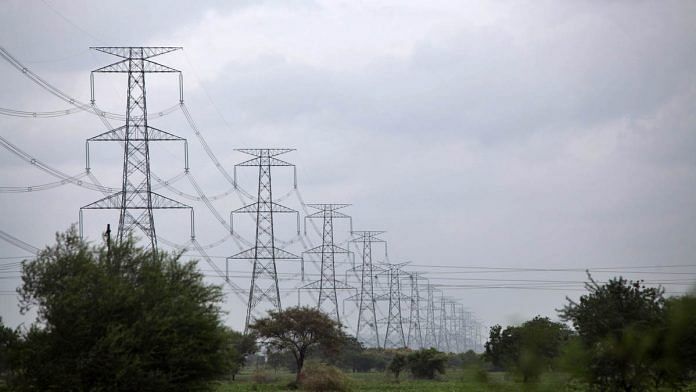The discoms haven’t met or are on the verge of missing deadlines even as states, which took over their debts, grapple with increased fiscal deficits.
New Delhi: The Modi government’s ambitious efforts to restore the health of debt-ridden state power distribution utilities (discoms), through its UDAY scheme, seem to have failed in achieving many of their desired outcomes, data from state finances and the state utility performance shows.
Under the Ujwal DISCOM Assurance Yojana (UDAY), state governments were to take over 75 per cent of the utilities’ debts and include it in their fiscal deficit calculations. In turn, the utilities were to meet certain financial targets such reducing their aggregate technical and commercial losses to less than 15 per cent and reducing the gap between the cost of supply of power and revenue realised to zero.
Many of the distribution utilities, however, are unlikely to meet any of the UDAY targets by the end of 2018-19.
For instance, a study by researchers at the National Institute of Public Finance and Policy (NIPFP) found that the average aggregate of technical and commercial losses across the country was 21.17 per cent till May 2018 but worsened to 25.41 per cent (as on 26 October 2018).
According to the UDAY website (as on 16 January), these losses are at 20.58 per cent. In FY 2017-18, states had managed to bring this down to 18.76 per cent.
The attempt to get the gap between the average cost of supply (ACS) per unit of power and per unit Average Revenue Realized (ARR) to nil by 2018-19 has also not been met. The study by NIPFP’s Amandeep Kaur and Lekha Chakraborty underlines that this gap is again rising.
Their data shows that in October 2018, this gap increased to 0.55 paisa per unit (23 states) from 0.29 paisa per unit (for 26 states) as of May 2018. It had, however, earlier fallen from the 0.45 paisa per unit (for 23 states) as of May 2017, the paper says.
As per the UDAY website, this ratio is now 0.33 paisa per unit (for 25 states).
Many state utilities have also been unable to bring down their electricity losses to meet the targets. While the commercial losses are because of theft or illegal metering, the technical losses are due to unavoidable electricity losses in the transmission system.
Also read: Electricity-for-all target shrinks in India as Modi’s deadline nears
States haven’t met operational targets as debts pile up
Many states are also lagging behind in some of the operational targets such smart metering for consumption above 200-kilowatt-hour (kWh) and feeder and distribution metering among others.
Some of the states have already missed the deadline to meet the operational targets while others are on the verge of doing so.
The scheme has also impacted state finances adversely with UDAY bonds increasing the debt liability of the Indian states.
The interest liability accruing on UDAY bonds is adding to the fiscal deficit of these states. Most of the states also breached the fiscal deficit targets as a percentage of state GDP set under the fiscal responsibility and budget management act due to the UDAY liabilities.
While there was an improvement across the financial parameters in 2017-18, an increase in the power purchase costs has become a setback to the progress. The power purchase costs increased in the first quarter of 2018-19 due to a hike in coal prices and freight hikes.
Pinaki Chakraborty, a professor at National Institute of Public Finance and Policy said that states have taken over UDAY liabilities and this has increased their total deficit but there is no corresponding improvement in the health of state electricity distribution boards.
“The idea of UDAY was this will improve the discoms’ health and the distribution mess will be cleared,” he said. “But the financial parameters have not improved. We are only waiting for another bailout.”
Also read: All homes will have electricity by March 31, assures Modi govt
Across the states
The UDAY website shows that only a few states have performed well and are on course to meet the financial targets.
These include Andhra Pradesh, Gujarat, Maharashtra and Karnataka. Some other states like Rajasthan, Uttarakhand, Tripura, Himachal Pradesh, Telangana and Kerala are on course to meet at least one of the financial targets.
Devendra Pant, chief economist and head of public finance at India Ratings and Research, said it is important for the state electricity distribution utilities to follow metering and collection efficiency to be financially viable.
“It is also important that states pay the dues to discoms on time to ensure there are no cash flow problems as they have to make further payments to power generators and transmission companies,” Pant said.
“States waive off power bills or lower tariffs for farmers but discoms should be adequately compensated. Timely revision of tariffs is also important to maintain the health and financial viability of the discoms in the long run.”







UDAY was not the transformative reform that the power sector required. Without addressing the underlying problem, it simply kicked the can a little further down the road. A better course of action would have been to remove subsidies for power supplied to agriculture in equated instalments over a ten year period. We would have been halfway there by now. A similar approach was followed to remove subsidies on diesel. 2. With such a decisive mandate, a lot of sensible reform, at a pace that was politically feasible, should have been attempted. At some stage, possibly around the time of the H / J / M election in October 2014, the idea seemed to gather force that the first five years should be devoted to acquiring political power across states, the real work would begin in the second term. The thought that a billion Indians are hungry, impatient, aspirational did not seem to cross the mind.